Compared to the normal Power Rankings that focus on where a team currently is, ESPN.com's Future Power Rankings tackle the trickier task of figuring out how teams will fare over the next five years. Predicting future success isn't easy, especially because time machines don't exist. To tackle this uncertainty, Buster Olney provided the overview on where things stand for each team, while Dan Szymborski ranked teams in four categories, explained below, to attempt to cut through the fog of uncertainty. The rankings were used to compute each team's overall score out of 30 points.
Current talent: 25 percent of the ranking. While a team's farm system has the heaviest weighting, the talent a team has right now is a large part of predicting the future as well. Good players now, especially those younger than 30, are likely to continue to be contributors for the next few years. Current talent also can be traded for future talent.
Future talent: 45 percent. For this category, we used a combination of the ZiPS projections for the minor league systems and Keith Law's 2018 farm system rankings, in order to get the best of both man and machine. Farm systems are as important for contenders as rebuilders, given that nobody has enough money to obtain all of their needs by spending alone.
Financial support: 20 percent. Poorer teams and/or teams in smaller markets do have the ability to compete in baseball, but we'd be lying to ourselves if we didn't say that financial support of a team was just "nice to have." Teams are ranked by their historical payrolls relative to revenue and market size.
Front office/ownership: 10 percent. Given its share, this category mostly functions as a tiebreaker for teams that are otherwise close. That's not to say these things aren't important, but a lot of front-office performance is already contained within the first three categories. The average front office is far more capable today than 30 years ago, and while you can argue that most of the lowest-ranked front offices -- maybe not the Marlins -- would be average or even better in 1988 or 1998, not everyone can be above average. Here, we're looking for front offices that most capably combine their strengths in the first three categories and, whether now or later, maximize their team's success. We're also looking for owners with the willingness to be patient with and to support the plans laid out by their front offices.
Overview: A strong case could be made that the Yankees are better positioned than any team in baseball, because they have some of the best of all types of elements right now. They have a top farm system, including high-end infielders Gleyber Torres and Miguel Andujar; their major league team is loaded with young and old talent, from power-hitting outfielders Aaron Judge and Giancarlo Stanton to 24-year-old ace Luis Severino; and they have the greatest payroll flexibility of any Yankees team since the early 1990s -- right before the Paul O'Neill-Tino Martinez dynasty. -- Olney
The dilemma: The Yankees have fewer concerns than most, obviously, but the Jacoby Ellsbury situation is one of them. It's one thing to talk about benching your third-highest-paid player with at least three years remaining on his contract. It's another thing to actually do that when the season starts. I think Aaron Boone will do a good job managing the Yankees, but having such a highly-paid fourth or even fifth outfielder could be a big freshman manager problem. -- Szymborski
Law's top Yankees prospect: SS Gleyber Torres (ranked No. 5 overall in the 2018 top 100). Torres is coming back from Tommy John surgery, but Law says, "He should stay in the middle infield for the long term, and a high batting average and OBP could make him a potential All-Star."
Overview: Just like the Yankees, the Dodgers have achieved massive payroll restructuring, reducing their obligations dramatically while also maintaining a contending team. Clayton Kershaw could opt out of his contract after this season, but even if he negotiates a significant raise, the Dodgers will be able to absorb that and contend for free agents to add to their tremendous young players such as Corey Seager and Cody Bellinger. The Dodgers could contend for championships for years to come. -- Olney
The dilemma: There's no question that the Dodgers have the financial wherewithal to sign Kershaw for the rest of his career. But is there a point when the team decides it shouldn't? As seen with Zack Greinke, once a player actually hits free agency, all bets are off. If bidding on Kershaw starts to hit $40 million a year, where is the limit for a pitcher who is developing a history of nagging back injuries? -- Szymborski
Law's top Dodgers prospect: RHP Walker Buehler (No. 12). Law notes, "He does have a full starter's arsenal and an arm action he can repeat ... If he holds up, he could be a No. 1 starter, with a very good chance he's a quality No. 2."
Overview: It's not just that the Astros have talent, a rival evaluator said, it's that they have extraordinary athletes such as George Springer and Carlos Correa who can make significant adjustments game to game, at-bat to at-bat. The core of the every-day lineup will remain intact for at least a couple more seasons, with Justin Verlander and Gerrit Cole each under contract through 2019. Despite all the players they've drawn out of the farm system for promotion and trades, the Astros' current group is solid. -- Olney
The dilemma: The Astros are a legitimately elite franchise, but with a 2018 payroll that looks to be north of $150 million, some decisions are looming on which players to sign long term. And we're not talking about the second-tier contributors; Dallas Keuchel and Charlie Morton hit free agency in 2018 and Jose Altuve and Verlander the following year. Knowing they likely can't keep all of them and also give Carlos Correa a monster extension, it's a tough decision, even if it's baseball's version of a first-world problem. -- Szymborski
Law's top Astros prospect: RHP Forrest Whitley (No. 8). Law called him "the best pitching prospect in the minors right now," but Whitley will have to wait to build on that until after serving a 50-game suspension for violating baseball's drug policy. On the mound, he "can flash four above-average pitches, with a plus fastball up to 97 mph."
Overview: The Cardinals are in the midst of a transition from seasons in which Matt Holliday, Yadier Molina and Adam Wainwright served as the core of the team. Holliday is gone and Molina and Wainwright are in the twilight of their respective careers, but now the Cardinals appear well-positioned to compete for a playoff spot again through the trade for Marcell Ozuna and the development of an excellent group of young pitchers. Carlos Martinez, Luke Weaver, Alex Reyes and Jack Flaherty could give the Cardinals an advantage over every other NL Central team into the future. -- Olney
The dilemma: Yu Darvish going to the Cubs was a large hit to the Cardinals, especially since Darvish could have potentially provided a top-rotation arm for the Cardinals as well. St. Louis has been well-served by the cool, calm and collected plans executed by the front office, but in a division with the Cubs, can they really afford to play it safe in free agency? At some point, the organization needs to take away a player the Cubs want because the Cubs are willing to pay for the top free agent in the market. -- Szymborski
Law's top Cardinals prospect: RHP Alex Reyes (No. 27). Despite missing the 2017 season after Tommy John surgery, Law says he has "front-line stuff if he can stay healthy, making Reyes a potential No. 1 or 2 starter or, at worst, a high K-rate reliever."
Overview: Former GM John Coppolella left the sport with the infamy of a lifetime ban, but he appears to have left the Braves' player development system in excellent condition. Rival evaluators say their farm system is loaded, including 20-year-old superprospect Ronald Acuna. What remains to be seen, however, is whether the young pitchers collected by Coppolella develop in the way that he anticipated; that will be the determining factor in whether the Braves get back to contending for the NL East. -- Olney
The dilemma: The Braves' ownership group, Liberty Media, has never been a particularly aggressive team when it comes to payroll, but will it loosen the purse strings to pursue top free agents? The Braves' farm system will provide a lot of what they'll need, but it won't provide everything. -- Szymborski
Law's top Braves prospect: OF Ronald Acuna (No. 1). Law says, "If Acuna stays in center and maxes out his power, he's going to be among the best players in baseball, with a Mike Trout-ish profile."
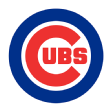 6. Chicago Cubs
6. Chicago Cubs
Overview: Years from now, when the Cubs gather for reunions, they'll probably ignore their 2017 season or perhaps gloss over what it was: a hangover from the 2016 championship. After the historic World Series run, the Cubs were pulled in different directions in the aftermath, and it showed, but they have seemed refocused again this spring. Because the position players are still a relatively young group, the Cubs' championship window remains open and should be for a few more years. The Cubs have continued to struggle to develop high-end pitching, so they have improved their staff in other ways, trading for Jose Quintana last summer and signing free agent Yu Darvish. -- Olney
The dilemma: What if a fitter Kyle Schwarber doesn't fulfill the offensive potential he showed in 2015? What if they never see any offensive progress from Jason Heyward? Chicago has mainly been able to address holes from within the farm system, but through graduations and trades, ZiPS now projects the Cubs to have a below-average farm system. That means that, like the signing of Darvish to replace Jake Arrieta, replacements will have to be bought, not developed. How far can they push payroll, and are they really willing to blow by the $200 million mark in coming seasons? -- Szymborski
Law's top Cubs prospect: SS/2B Aramis Ademan (No. 78). Described as "a projectable middle infielder... [he] should fill out in time to turn his tools into real offensive production."
Overview: The first two elements of the Phillies' rebuilding program are complete, with the steep reduction of financial obligations and the assembling of talent. The Phillies' next step is to plug in the holes around young, developing players such as J.P. Crawford and Rhys Hoskins, which is why they invested $60 million in Carlos Santana. More time may be needed for the Phillies to seriously contend, but the club seems poised to chase the Nationals and Mets this season and perhaps overtake them in 2019. -- Olney
The dilemma: I think it almost goes without question that the Phillies, nearing contention, will start flashing all that Comcast cash in next year's free-agent market. But how high will the team go? One can argue that with a current roster that projects to make under $100 million in 2019, the team can go after multiple elite free agents next winter. Will they have the stomach for the massive financial gamble that Bryce Harper and Manny Machado would represent? Because they have the enviable problem of being able to make such a bet. -- Szymborski
Law's top Phillies prospect: SS J.P. Crawford (No. 10). Crawford is "a well-above-average regular because of how much he projects to get on base. [But] if the newfound power sticks around, he'll be worth 5-6 wins for a long time."
Overview: This could be the Nationals' last chance to win a championship with Bryce Harper, but if he leaves, it's not as if Washington's talent will wholly vanish. Among those who will be part of the 2019 Nationals: Max Scherzer, Stephen Strasburg, Anthony Rendon, Adam Eaton, Michael Taylor and star prospect Victor Robles. General managers with other teams say that even as Mike Rizzo makes trades, he keeps the best of his talent, and this should keep Washington competitive regardless of whether Harper remains. -- Olney
The dilemma: The Nationals have other members of their core nearing free agency, but nobody's departure threatens to crack the team's foundation more than Harper. Just how high would the team be willing to chase its franchise player in free agency? And if they lose him, would even re-signing the rest be enough to hold off the Braves and Phillies over the next several years? -- Szymborski
Law's top Nationals prospect: CF Victor Robles (No. 4). The Nats' future in center belongs to Robles, as he's "a 70 runner and plus defender in center with a plus arm. He could easily step in to the Nats' outfield right now ..."
Overview: Like the Pirates of 2013-2015, the Indians have had a remarkable run of recent success -- posting MLB's best record over the past five years -- without necessarily getting full credit for it, because they have not won a World Series. And like the Pirates, the Indians must soon address difficult decisions because of the financial realities of their market. Andrew Miller and Cody Allen will be eligible for free agency after this season, Francisco Lindor remains unsigned to a long-term deal, and 2018 could turn out to be the end of the Indians' window of opportunity. -- Olney
The dilemma: At what point do the Indians simply decide that, despite the tremendous upside that Danny Salazar presents as a starting pitcher, it's safer to use him in the bullpen? I still think a healthy Salazar has Cy Young potential, but with his injury history, can a team in win-now mode afford to chase that prize? -- Szymborski
Law's top Indians prospect: C/3B Francisco Mejia (No. 7). Law observes "Mejia's hit tool is far enough ahead of his defense that it might behoove Cleveland ... to try him at another position to get his bat into the lineup sooner. ... Wherever he plays, he should be worth a couple of wins with his bat alone."
Overview: With the Indians likely to fade under the weight of free-agent departures and financial challenges after this season, the White Sox seem perfectly positioned to ascend -- if young pitchers such as Carlos Rodon, Carson Fulmer and Michael Kopech develop as they expect. Chicago's group of young position players is impressive: Eloy Jimenez, acquired from the Cubs for Jose Quintana, is among the best prospects in baseball; the 22-year-old Yoan Moncada bounced back from a slow start with the White Sox last season; and shortstop Tim Anderson is locked up to a long-term deal. -- Olney
The dilemma: The team has done an excellent job assembling talent, but when will the White Sox face reality and trade Jose Abreu while he still has value? At 31 years old, it's hard to justify a long-term deal for Abreu and it's extremely unlikely retaining him is the difference between contending or not during the two years before he hits the market. -- Szymborski
Keith Law's top White Sox prospect: OF Eloy Jimenez (No. 6). Getting Jimenez from the Cubs in the Quintana trade last summer should pay off, as Law says he "hits like you'd expect him to hit: often and far ... a middle-of-the-order bat, maybe a full year away from becoming a big league regular."
Overview: General managers with other teams know the aggressive history of Brewers owner Mark Attanasio, how he sometimes circumvented former GM Doug Melvin in his effort to create a team capable of winning. So as Milwaukee has gotten closer to building a winner -- and last year, it was on the verge of the playoffs -- they've watched and wondered if Attanasio would shove aside the careful plans of GM David Stearns to sign a Jake Arrieta or push for a big win-now trade. Attanasio did have a hand in the signing of Lorenzo Cain. But Stearns still seemingly has his hands firmly on the steering wheel, and the Brewers continue to improve. -- Olney
The dilemma: It's difficult to overestimate the value of adding Christian Yelich and Lorenzo Cain to the outfield, but it creates a tricky situation until and unless one of the extra outfielders is traded over the next month. The best possible Brewers lineup likely doesn't have Ryan Braun and Eric Thames in it, leaving the team to have to choose between benching a superior player, benching the sagging face of the team, or benching one of the team's best stories from 2017. -- Szymborski
Law's top Brewers prospect: RHP Corbin Burnes (No. 24). He "has the command of a finesse guy, but the stuff of a No. 2 starter ... he's not that far off from a big league rotation spot."
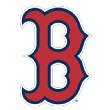 12. Boston Red Sox
12. Boston Red Sox
Overview: The good news is that the Red Sox have an excellent collection of talent in place for a few years, at least, with Mookie Betts followed in the lineup by Rafael Devers and other 20-somethings. But Boston is reaching a difficult place with its pitching -- something that isn't a concern in 2018, but will be soon. Their two pitchers with the highest impact, Craig Kimbrel and Chris Sale, could be eligible for free agency over the next two winters, Kimbrel in 2018 and Sale in 2019. Boston drew heavily on its farm system in an effort to win the past couple of years, and the price for that will be paid in the next few years: Will they spend big on their own free-agents to cover for a thin system, or will they step back after 2019 and reload their farm system as the Yankees emerge? -- Olney
The dilemma: Getting J.D. Martinez needed to happen, but with the Yankees picking up Giancarlo Stanton, the Sox still lost ground offensively. The team still needs a first baseman better than Mitch Moreland or Hanley Ramirez, but with the farm system weak at the moment, where do they find one? Do they have enough to convince the White Sox to part with Jose Abreu? -- Szymborski
Law's top Red Sox prospect: LHP Jay Groome (No. 30 overall). While noting Boston's system hasn't been this shallow in years and Groome's season didn't sparkle, Law says, "despite all of the missed time, his arm is still healthy, so his upside of a No. 2 starter remains intact."
 13. Minnesota Twins
13. Minnesota Twins
Overview: Few midmarket teams are as well-positioned moving into the future as the Twins, who have good young position talent and extraordinary payroll flexibility. But Minnesota's biggest challenge is a holdover from the Bill Smith and Terry Ryan eras: When will the Twins develop their own high-end pitching? Like Smith and Ryan, Derek Falvey has had to stock his staff through free-agent signings and trades, and no young star pitchers are on the horizon. Miguel Sano is a major X factor, because at his best, he's an impact hitter. But his conditioning is a constant question, and he's currently under investigation for sexual assault. -- Olney
The dilemma: Deciding what to do with Brian Dozier appeared much easier when the team was losing 103 games. If the team isn't willing to trade him, they likely need to agree to a long-term contract -- if reasonable terms can be found -- sooner rather than letting him hit the market. -- Szymborski
Law's top Twins prospect: SS Royce Lewis (No. 25). The top pick in the 2017 draft is the best prospect in a deep system, because "If he stays at shortstop, he has superstar upside."
 14. San Diego Padres
14. San Diego Padres
Overview: Agent Scott Boras famously described the Padres' farm system as a "volcano of hot talent lava." Boras said this after San Diego spent $144 million on one of his clients, Eric Hosmer, but his assessment matches those of other teams -- the Padres might have the best collection of 18- to 20-year-old prospects of any team. However, rival evaluators also say that the Padres are far from constructing a competitive pitching staff. Perhaps there will be a day when San Diego will need another of Boras' clients as a finishing piece. -- Olney
The dilemma: Does this team have the patience to complete the rebuild? Already, they've shown disdain for the basic fact-finding mission important to a rebuilding team by handing Erick Aybar and Freddy Galvis shortstop jobs in consecutive years for no particular reason and then committing a minimum of $105 million for Eric Hosmer, a first baseman who has never had two good seasons in a row. -- Szymborski
Law's top Padres prospect: SS Fernando Tatis Jr. (No. 3). "Tatis looks like Manny Machado did at age 18 and has similar gifts at the plate," as Law also notes the only question is his ultimate position.
 15. Tampa Bay Rays
15. Tampa Bay Rays
Overview: They've continued to tread water with the same circumstances for the past decade. They've fielded just enough high-level pitching to win their share of games and have maintained a decent pipeline of minor league talent to complement some decent free-agent signings. This should be true of the Rays again in 2018, because of the presence of Chris Archer. But the Rays may never truly have a chance to ascend -- especially in the forthcoming era of Yankees dominance -- unless the efforts of owner Stuart Sternberg to secure a new ballpark pay off. -- Olney
The dilemma: The farm system is excellent, but given how the Rays designated Corey Dickerson for assignment over his $6 million contract, one has to wonder if the team can support another strong run. Tampa Bay's model works when you can utilize all six cost-controlled seasons of a player, but if arbitration-eligible players are too expensive, one might worry about the future of the franchise. -- Szymborski
Law's top Rays prospect: SS Willy Adames (No. 20). It was No. 15 Brent Honeywell, but with the pitcher out for 2018 after Tommy John surgery, Adames reflects the system's improving crop of position players, with Law saying, "If he stays at short, he has All-Star upside with the bat."
 16. Colorado Rockies
16. Colorado Rockies
Overview: The Rockies were not shy in free agency over the past two winters, investing $70 million in Ian Desmond and investing big dollars in closer Greg Holland -- and it paid off for them, with Colorado reaching the postseason for the first time since 2007. They went in big again this offseason, spending aggressively for elite relievers in Wade Davis and Bryan Shaw and re-signing Jake McGee. The Rockies now have to hope that their young starters hold up, in the face of a history in which pitchers quickly evaporate under the conditions at Coors Field, and that the backbone of the team is not wrecked through the upcoming free agency of Charlie Blackmon (next fall) and Nolan Arenado (2019). -- Olney
The dilemma: The team has done an excellent job at developing minor league talent. But when faced with a team that was literally below average offensively -- you'd expect a league-average offense in 2017 Coors to have an OPS around .824, yet they missed that by more than 40 points -- the front office didn't actually do anything but hope it would work out. With so many of the team's 2017 wins coming from Nolan Arenado and Charlie Blackmon and with both nearing free agency, you already can see the end of this current run on the horizon if the front office doesn't address the holes in the lineup. -- Szymborski
Law's top Rockies prospect: SS Brendan Rodgers (No. 29). Law notes his range of outcomes, as he "could be anything from a solid-average regular at second base ... to a fringe star at shortstop who hits 20-some homers."
Overview: The additions of Justin Upton, Shohei Ohtani, Ian Kinsler and Zack Cozart energized the Angels' organization, and they might represent the most serious threat to the Astros in the AL West. But of greater importance is that GM Billy Eppler continues to demonstrate to Mike Trout that he'll do all that he can to win, and gradually, the Angels are overcoming their payroll complications and improving their farm system. Trout will be eligible for free agency after the 2020 season, and one friend said of him: "He has no interest in being his generation's Ernie Banks." -- Olney
The dilemma: The Angels have improved this offseason, arguably more than any team in baseball, but there's still one difficult decision they keep putting off -- Albert Pujols. In a division with the world champions, the Angels don't have the luxury to continue playing Pujols for nostalgia, especially nostalgia generated almost entirely from when he played for an entirely different franchise. -- Szymborski
Keith Law's top Angels prospect: OF Jo Adell (No. 55). Law notes that, "Even if he has to move to left ... his bat looks like it's going to profile there with 80 raw power and huge exit velocities already in pro ball."
 18. New York Mets
18. New York Mets
Overview: Few organizations are as top-heavy and dependent on a small handful of players as the Mets are. If Noah Syndergaard and Jacob deGrom make 55-60 starts this season and in the seasons ahead, then yes, the Mets will compete for a playoff berth. But underneath that thin layer of excellence, there are major concerns about what is considered a thin farm system, the ability of Yoenis Cespedes to stay healthy and, of course, the question of whether the Mets will spend as aggressively as other big-market teams. -- Olney
The dilemma: The Mets finally did one thing they really needed to, treating anything they ever get from David Wright as a bonus and making alternate plans by bringing in Todd Frazier in one of the year's best free-agent bargains. But when will the Mets act like a large-market team? They aren't the Rays or the Marlins, and the team is close enough to contention that it should have been one of the biggest players in this winter's free-agent market. -- Szymborski
Law's top Mets prospect: LHP David Peterson (No. 58). "He has a high floor as a back-end starter, but there's a little Chris Sale/Alex Wood potential here if he adds velocity when he fills out."
Overview: The best-case scenario for the Pirates -- the greatest hopes of the front office -- is for Pittsburgh's young starting pitchers to blossom all at once. If that happens, the Pirates could again challenge for the top of the NL Central, most likely in 2019, and the controversial trades of Gerrit Cole and Andrew McCutchen may be viewed in a very different light in Pittsburgh. But it's also possible that if the Pirates struggle in the first half of 2018, the front office might have to consider more trades of veterans, from Ivan Nova to Starling Marte. The margin for error seems small. -- Olney
The dilemma: Does the front office have enough rope to repeat the previous rebuilding process? While the team did a great job building the basic core of the team, when it was time to push ahead and add players to get over the top -- like the Astros did with Justin Verlander -- the organization never got them. Ownership is going to need to be more aggressive with its investment in the on-field product during the team's next run or risk falling short again. -- Szymborski
Law's top Pirates prospect: RHP Mitch Keller (No. 18). Law notes, "Keller has the two plus pitches and control to be a No. 1 or 2 starter."
Overview: When Mark Shapiro and Ross Atkins assumed control of the Jays, they had a precise challenge with little margin for error -- rebuild a mostly barren farm system while augmenting the older core of players at the major league level enough to contend. They've mostly accomplished that and have maintained the interest of fans in Canada -- the Jays were fifth in attendance in 2017 -- and now the farm system is on the verge of churning out star prospects such as Vladimir Guerrero Jr. and Bo Bichette, just as the generation of Jose Bautista is moving on. The Jays could add more talent this summer by trading Josh Donaldson and perhaps Marcus Stroman and others. -- Olney
The dilemma: Donaldson's pending free agency presents a difficult problem for the Jays, because to know what's the smartest thing to do, you need to know where the Jays are going over the next five years. I don't think the Jays even know, leaving them at risk of not getting the most out of Donaldson's talent. Like the Rangers and Giants, I think the Jays will eventually have to make the decision to start rebuilding. -- Szymborski
Law's top Blue Jays prospect: 3B Vlad Guerrero Jr. (No. 2). One of two tremendous teen phenoms in the system, with shortstop Bo Bichette ranked at No. 17, Baby Vlad "has his dad's loose, whippy wrists, great plate coverage and plus raw power."
Overview: Think of GM Mike Hazen as a river rafter: He managed to get through the first rough water last year with ease, leading the Diamondbacks back to the playoffs mainly through the improved performance of players already on the roster (Robbie Ray, Archie Bradley) and a timely addition of J.D. Martinez. But there are more challenging rapids ahead, because over the next two years, A.J. Pollock, Patrick Corbin and Paul Goldschmidt will reach free agency; Hazen will have to figure out a way to make the budget numbers work, improve the farm system and contend all at the same time. Goldschmidt's situation is not unlike that of Andrew McCutchen and the Pirates -- he is a legacy player, and it's not unreasonable for him to expect big dollars as a free agent. But the Diamondbacks have to decide what level of investment they will be make for a player who will be 32 when he gets closer to free-agency eligibility. -- Olney
The dilemma: Arizona won 93 games in 2017, but the D-backs needed a J.D. Martinez trade and most of the rotation having some kind of Cy Young case just to get there. They won't be as fortunate every year, and while Steven Souza Jr. is an upgrade over Yasmany Tomas, the team's lineup only rates in the league's top third at first base and center field. -- Szymborski
Law's top D-backs prospect: RHP Jon Duplantier (No. 64). Keith says the Rice product "has shown the assortment of pitches and control to offer a pretty high floor as a starter -- as long as he stays healthy -- with a chance for a No. 3 starter."
Overview: After San Francisco's terrible 2017 season, the front office had the option to blow up the core of the team that won just 64 games. Instead, San Francisco reloaded with older players -- Andrew McCutchen, Evan Longoria and Austin Jackson -- in an attempt to win a fourth championship in nine years. The farm system is regarded as one of baseball's worst, so if the Giants get off to a bad start, Brian Sabean and his staff will have a very difficult decision: Should they consider trading off ring-adorned veterans to fuel a full rebuild? -- Olney
The dilemma: Do the Giants go over that luxury-tax threshold? They've made a lot of short-term moves at the expense of the remains of the farm system, which ZiPS now ranks as the worst in baseball. But they didn't assemble a likely 90-win team, and the team's final push may not get a big enough boost from an aging Evan Longoria and Andrew McCutchen. Falling short in the race for all three Marlins outfielders and Shohei Ohtani hurts, and while the Giants made the effort, they needed those wins. -- Szymborski
Law's top Giants prospect: OF Heliot Ramos (No. 95). Keith cautions he's "the best prospect in a bad system, which can color perceptions of a player, although I had several people outside of the Giants org push for him to make the top 100."
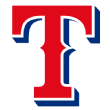 23. Texas Rangers
23. Texas Rangers
Overview: The Rangers seem to be like the poker player who has a modest stack of chips while surrounded by big stacks. The Astros lord over the AL West table, and the Angels have won a few hands this winter. Texas, on the other hand, seems to be biding its time, waiting for the next-best opportunity, and that may not come until after the Rangers turn over parts of their current roster, including Cole Hamels and future Hall of Famer Adrian Beltre, who turns 39 this spring. Joey Gallo did major damage last season, but Rougned Odor took a big step back last season and the Rangers' starting pitching appears dangerously thin, for now and into the future. Jon Daniels could really use a pair of young aces to materialize. -- Olney
The dilemma: ZiPS doesn't project Texas to have enough major league talent to be anything more than a fringe wild-card contender, thanks in large part to a rotation that's projected to be worse than any legitimate contender's. Texas needed a big offseason to stave off rebuilding as its best option, and it didn't have one. Where will the Rangers get the starting pitching necessary to avoid throwing in the towel? -- Szymborski
Law's top Rangers prospect: CF Leody Taveras (No. 45). "Taveras doesn't have [Nomar] Mazara's power upside, but his superior defensive profile and contact skills make him a comparable prospect in future value."
 24. Cincinnati Reds
24. Cincinnati Reds
Overview: The conditions for a climb in the standings are seemingly now in place, after three straight years with sub-70 win totals. The Reds have developed a respected group of young pitchers, including starters Luis Castillo and Robert Stephenson and closer Raisel Iglesias. They have a ton of payroll flexibility on the horizon -- once Homer Bailey's contract comes off the books at the close of the 2019 season, Joey Votto will be the organization's only big-ticket item -- and the farm system has improved, led by infielder Nick Senzel and right-hander Tyler Mahle. All they need now is for the youngsters' potential to translate. -- Olney
The dilemma: The rebuild is panning out well for the Reds, but now they have difficult decisions as they transition toward contending again. The biggest one I see is whether they can really commit to shopping stopgap outfielders like Adam Duvall and Scott Schebler while they still have value. They're already having a difficult time finding playing time for Jesse Winker, with more outfield prospects on the way. -- Szymborski
Law's top Reds prospect: 3B Nick Senzel (No. 9). One of baseball's most anticipated prospects, "Senzel has a no-load swing with tremendous hand acceleration, so he still makes hard contact despite being exceptionally short to the ball ... He's a player you build your lineup around."
Overview: Billy Beane's best teams have always had a common denominator: outstanding young (and cheap) pitching, from the years of Mark Mulder, Tim Hudson and Barry Zito to three seasons of Dan Haren to the early excellence of Jarrod Parker. The Athletics have some promising young position players now, but Oakland needs Sean Manaea, A.J. Puk and other young starters to progress if the franchise is to compete for division titles anytime in the near future. -- Olney
The dilemma: Beane lamented recently the difficulty for the A's in a world in which most teams now value the same things. The team's ownership is not interested in investing heavily in the on-field product, and the stadium situation remains up in the air. -- Szymborski
Law's top A's prospect: LHP A.J. Puk (No. 13). Keith touted how "Puk very quietly had one of the best years of any pitcher in the minors ... he's a comfortable No. 2 and should be among the best southpaws in the game at his peak."
 26. Seattle Mariners
26. Seattle Mariners
Overview: When GM Jerry Dipoto assumed control of the Mariners, he wanted to improve a talented but aging core that includes Felix Hernandez and Robinson Cano in an effort to win now, and to also improve the farm system. But so far, they aren't gaining traction on either front: Beset by injuries, the Mariners won just 78 games last season, and some rival evaluators continue to view Seattle's farm system among the bottom third in MLB. The Mariners' focus might have to shift entirely to a rebuilding if their older group of major leaguers underperform. -- Olney
The dilemma: One of the relatively few teams in baseball's middle class, the Mariners are incentivized to make a significant push forward and make the team at least a first-tier contender. The rotation is problematic, yet the team has done practically nothing to improve a rotation that finished 25th in fWAR in 2017. With key players aging and a weak farm system, now is all they have, but there's little urgency. -- Szymborski
Law's top Mariners prospect: OF Kyle Lewis. In what Law evaluates as "the worst farm system in baseball this year, with no top-100 prospects or anyone particularly close," Lewis is "a corner outfielder with big power upside, but he has work to do on pitch recognition and selection."
 27. Detroit Tigers
27. Detroit Tigers
Overview: It's as if the credit card bill for a decade of good baseball in Detroit came due last year, and GM Al Avila was absolutely transparent about the team's current strategy as he traded away stars such as Justin Verlander and Ian Kinsler. They must slash payroll, they must add prospects to their farm system, and it may take years before the Tigers contend again. The lingering questions that rival executives have are whether Tigers fans will return for the next round of success, and whether Chris Ilitch will still own the team. Miguel Cabrera will chase milestones over the next three or four years, a welcome distraction from what figures to be some significant problems. -- Olney
The dilemma: Are they stuck with the contracts of Cabrera and Jordan Zimmermann? Zimmermann may be completely unmovable, but what about Cabrera? It's an open question, but would the Tigers be willing to eat a lot of salary to move their franchise player, who has a minimum of $184 million remaining? -- Szymborski
Law's top Tigers prospect: RHP Franklin Perez (No. 67). The prize from the Verlander trade, Perez "might be a few years from being ready for a full starter's workload, but he has No. 2-3 upside when he gets there."
Overview: The O's are entering a crossroads year and there's really no telling yet what shape they'll be in next year. Manny Machado, Zach Britton and perhaps Adam Jones are likely to be traded, but there is also uncertainty about GM Dan Duquette and manager Buck Showalter. Will they both leave? Stay? Will Showalter assume some of Duquette's responsibility? Whoever is in power at the winter meetings next December will be facing a major rebuild. -- Olney
The dilemma: What to do with Machado is the biggest decision the team has had to make in some time. The Orioles have likely already missed the chance to maximize his trade value with only a year remaining until Machado hits free agency, but a long-term contract looks no less unlikely than it did two years ago. Without Machado, the O's are a middling offense with a grotesque pitching rotation and not enough hope on the horizon to fix it. -- Szymborski
Law's top O's prospect: C Chance Sisco (No. 53 overall). The prize in a long-moribund system, Law notes that "there's above-average regular upside if Sisco can unlock some of [his] home run potential in games."
Overview: GM Dayton Moore built a championship team from the ground up, but now he must start over. Kansas City still has some turnover to address, with left fielder Alex Gordon and pitcher Danny Duffy under contract, but the Royals' work in restocking the farm system and developing talent over the next few years is their most important task. -- Olney
The dilemma: Kansas City has a hard road ahead. While flags fly forever, the team has a challenge in making sure the fans they added from 2012 to 2015 stick around for what looks to be a long, painful rebuild. The team was close enough to the playoffs last year to make hanging on to the veterans seem a reasonable move, but the bill has come due in the form of an empty farm system. -- Szymborski
Law's top Royals prospect: OF Khalil Lee. Symptomatic of their emptied-out system, Lee's intriguing power-speed combo just missed the top 100.
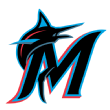 30. Miami Marlins
30. Miami Marlins
Overview: Derek Jeter's bosses will praise his work at the end of this season, because the Marlins will make a profit. With the shedding of almost all of the team's best and most expensive players, the Marlins slashed payroll and set themselves up to be near or at the top of the draft in 2019 and a few years after that. The farm system is better through the trades. But no one will know for many years what the lingering impact of yet another fire sale will have on the viability of baseball in South Florida; it remains to be seen if the most recent Marlins sell-off will serve as the kill shot for the market -- and whether fans will care if and when the team is competitive again. -- Olney
The dilemma: After the latest fire sale, one starts to wonder if there actually is a realistic path in Miami to long-term stability and strength. While they have two World Series championships, there's no real fan base from these victories given the team's consistent tendency to slash and burn whenever possible. -- Szymborski
Law's top Marlins prospect: CF Lewis Brinson (No. 32). Before he was traded to Miami, Law said, "Brinson shows 70-grade defense in center and 80 raw power that is starting to show up more in games."

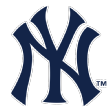 1.
1. 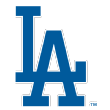 2.
2.  3.
3.  4.
4.  5.
5.  7.
7. 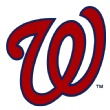 8.
8.  9.
9. 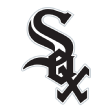 10.
10. 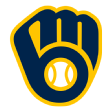 11.
11. 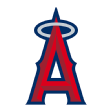 17.
17.  19.
19. 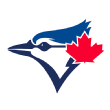 20.
20. 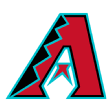 21.
21. 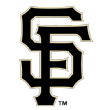 22.
22. 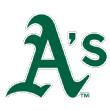 25.
25.  28.
28.  29.
29.